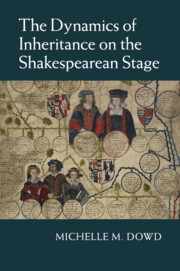Book contents
- The Dynamics of Inheritance on the Shakespearean Stage
- The Dynamics of Inheritance on the Shakespearean Stage
- Copyright page
- Dedication
- Contents
- Illustrations
- Book part
- Note on texts and dates
- Introduction
- Chapter 1 Crooked titles and inconstant estates
- Chapter 2 Revision and inaccessibility inThe Duchess of Malfi
- Chapter 3 Travel, displacement, and the prodigal son
- Chapter 4 Dislocation and the loss of issue inPericles
- Chapter 5 Claustrophobia and urban affiliation inVolponeandEpicene
- Epilogue
- Bibliography
- Index
- References
Bibliography
Published online by Cambridge University Press: 05 May 2015
- The Dynamics of Inheritance on the Shakespearean Stage
- The Dynamics of Inheritance on the Shakespearean Stage
- Copyright page
- Dedication
- Contents
- Illustrations
- Book part
- Note on texts and dates
- Introduction
- Chapter 1 Crooked titles and inconstant estates
- Chapter 2 Revision and inaccessibility inThe Duchess of Malfi
- Chapter 3 Travel, displacement, and the prodigal son
- Chapter 4 Dislocation and the loss of issue inPericles
- Chapter 5 Claustrophobia and urban affiliation inVolponeandEpicene
- Epilogue
- Bibliography
- Index
- References
Information
- Type
- Chapter
- Information
- The Dynamics of Inheritance on the Shakespearean Stage , pp. 263 - 281Publisher: Cambridge University PressPrint publication year: 2015
